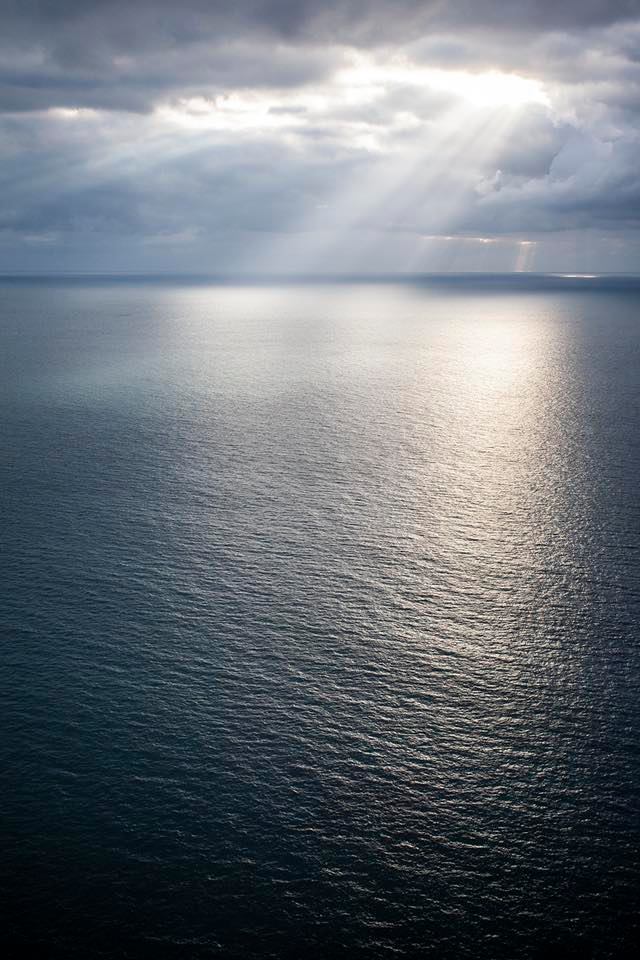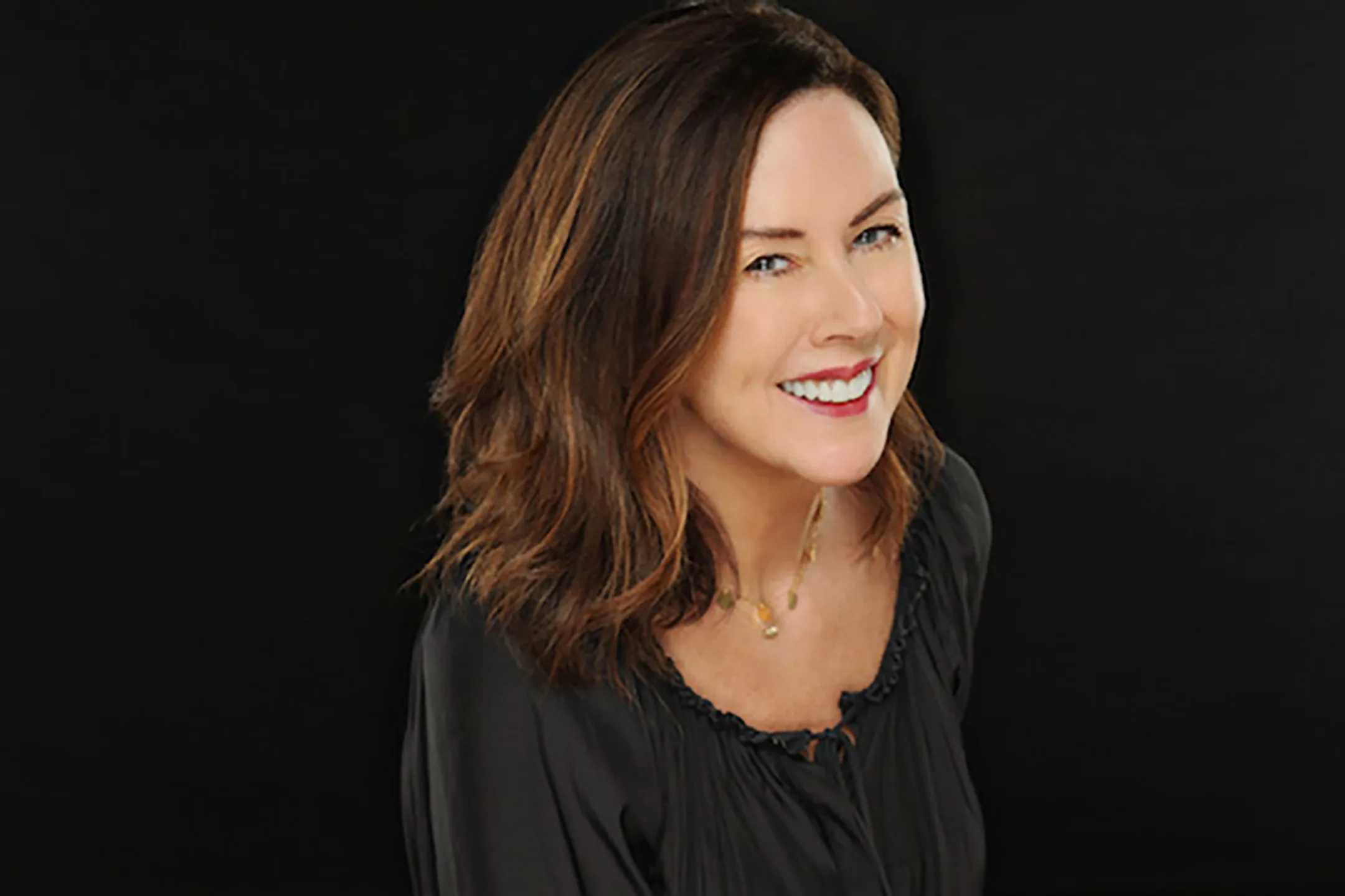Amazing Oceans of Life by Dr. Mark Hixon

Did you know that if you put all the Earth’s water (by far most of which is the oceans) into a ball, it would only measure 860 miles in diameter? The fragility of our oceans comes into focus when we realize how the thin layer of water covering 71% of the Earth can be affected by over 7.5 billion people. Dr. Mark Hixon is an endowed professor of marine biology at the University of Hawai’i. He recently visited The Ranch to give talks on the Amazing Oceans of Life. He has advice regarding actions we can all take to help preserve the oceans, thereby reducing the threats humanity has created.
“The ocean teaches us one thing above all else: all things are connected. Therefore, we cannot continue to abuse the sea, dumping whatever we want into it, and taking whatever we want out of it.”
Five Main Threats to Our Oceans:
- Overfishing and Associated Habitat Destruction– Overfishing is defined as taking fish from a population faster than that population can replenish. There are two main sources of overfishing; 1. Commercial fishing using enormous nets and long lines that catch fish in mass and drive the population down. Look at Atlantic Cod for an example, and the Atlantic Bluefin Tuna, the largest tuna species, which are so valuable in the Japanese market that a single fish can sell for over a million dollars. Once people are paying that much for a fish, it’s a recipe for disaster. 2. Then there’s desperation fishing. In poorer nations, people are so desperate for food they’ll overfish a coral reefs and use dynamite to blow up parts of the reef to stun the remaining fish. It’s fishing by destruction. There’s also the demolition of fish habitat by bottom trawling, where enormous nets are dragged across the seafloor, which not only catch the fish but also scrapes-up everything else. Think of it as hunting deer by bulldozing the forest. Fortunately, there are ways to fish that don’t overfish or destroy habitat.
- Invasive Species– Don’t dispose of your aquarium fish by dumping them into the ocean. Look at the lionfish, which comes from the Pacific Ocean, for example. They’re ferocious predators and not native to the Atlantic. As people moved or got tired of having them in their aquariums, they released them into the ocean. Now they are causing a lot of destruction to native species along the coast of Florida, the Gulf Coast, and the broader Caribbean region.
- Plastic Debris– This is a huge problem, but one everyone can help control. Plastics started becoming abundant in the 1950s. As consumer goods became more and more made of plastic, the problem grew. But those disposable things don’t just go away because you throw them in the garbage can. In many parts of the world, they end up in rivers and flow into the ocean. Another plastics problem is derelict fishing gear. Those miles of nets and long lines get snagged or tangled, and some fishermen will just cut them loose. They end up floating out in the ocean and killing sea turtles, seabirds, and anything else that gets trapped. As plastic debris breaks into smaller pieces, the birds and fish start eating it, filling their bellies so there is no room for real food, and they can starve to death. Plastics never really go away; they don’t fully degrade. They just break into smaller and smaller particles and become little poison pellets as pollutants and toxins adhere to them. These little poison pills are eaten by plankton, which in turn are eaten by fish and other sea life which we eat. Those plastics that get thrown away we end up eating. It’s a full circle. Simple solution: stop buying disposable plastics.
- Other Pollution– Until the 1970’s we dumped much of our radioactive waste in the oceans. It never went away. For example, off the San Francisco coast at the Farallon Islands, there’s a dumpsite with radioactive waste. They recently went down in submersibles and saw those 55-gallon drums now leaking radiation all over the seafloor. Sound is also a big problem. Noise pollution from ships at sea, sonic testing for deep-sea mining and oil drilling, and military activities all cause disruption to sea life. Then there’s chemical pollution, to which we all contribute. Every time you pour something down the sink or flush it down the toilet, it almost always ends up in the ocean. Many chemicals don’t break down, even if they go through a sewage plant. The oceans are downstream from everything and they become a dump for it all; the oils, the medicines, the chemical additives to our food, all that stuff ends up in the ocean. Some pollutants cause cancer, some cause mutations in our cells, and some we have no idea how they affect us. It’s a giant experiment spreading chemicals around the world by using the oceans as humanity’s great sewer.
- Ocean Warming and Acidification– These are the twin 800-pound gorillas attacking the ocean. First, ocean warming is caused by global warming. We burn so much oil, gas, coal, and forests, all of which release carbon dioxide. It all contributes to the greenhouse effect that’s warming the planet. About 90% of that extra energy warming the atmosphere is being absorbed by and warming the ocean. Even the deep sea is warming now. In the shallow waters, we’re seeing the coral reefs bleaching and dying. We’ve lost about 50% of the coral reefs in the world due to bleaching and other human activities. Second, ocean acidification is caused by the carbon dioxide we’re releasing into the air being absorbed by seawater. It mixes with the water and forms carbonic acid, the same acid in sodas (remember your mom telling you that sodas dissolve your teeth?). Species that have limestone skeletons made of calcium carbonate are not able to grow their skeletons easily as seawater acidifies. Coral reefs cover less than 1/10th of one percent of the ocean, generating about 20% of the marine fish catch. That is, about 1/5th of all the fish we catch comes from coral reefs. They’re protein factories. We’re also finding fantastic new medicines from coral reef species. Some of the most promising medications being discovered for cancer and other terrible diseases are coming from an ecosystem that’s now severely threatened by ocean warming and acidification.
Five Simple Ways You Can Help Save the Oceans:
- Eat Sustainably Sourced Seafood– Be an informed consumer. Seafoodwatch.org of the Monterey Bay Aquarium is an excellent resource to learn what species of fish and parts of the ocean are fished in sustainable ways. As consumers, we have a lot of power and can help shape how fishing industries behave.
- Reduce and Eliminate Disposable Single-Use Plastics- Buy reusable containers. Don’t buy disposable lighters, pens, straws, water bottles, any single-use plastic. Reduce and reuse whenever possible.
- Don’t Dump Chemicals in Sinks and Toilets– Think before you dump or flush.
- Reduce Your Carbon Footprint– This isn’t just about the car we drive, how we light, heat, and cool our homes, or how we travel. It includes the clothing we wear, what we buy, and where it originated. We can still live good lives and be less consumptive and solve global warming. Each of us can be good citizens by doing a few simple things and having a significant positive impact on future generations. Be sure to get information about climate change from scientifically valid sources, such as Yale University’s Climate Connections online.
- Learn More about Ocean Conservation and Vote Accordingly– A huge solution to saving the oceans is how we vote and what those elected officials represent. Are they willing to do the work to help the ocean? We need to educate ourselves, educate others, and then vote responsibly. (This Amazing Oceans of Life Resources with references is a good place to start).
MARK HIXON is a professor in the School of Life Sciences at the University of Hawai‘i at Mānoa. He is the Sidney and Erika Hsiao [rhymes with “chow” but starts with an “sh” sound] Endowed Chair in Marine Biology, and serves as Chair of the Zoology Graduate Program. His expertise is marine ecology and conservation biology, especially regarding coral reefs, which he has studied in many locales around the world. Mark completed his graduate work at the University of California at Santa Barbara. He began his studies of coral reefs in the late 1970s. From 1984 to 2012, Mark was a professor at Oregon State University, then was recruited back to UH as an endowed professor in 2013.
In 2004, Mark was recognized by the Institute for Scientific Information Citation Index as the most cited scientific author on coral-reef ecology in the United States. A Fulbright Senior Scholar, Aldo Leopold Fellow, and Fellow of the International Coral Reef Society, Mark serves on the editorial boards of multiple scientific journals. He is past chair of both the Marine Protected Areas Federal Advisory Committee for the National Oceanic and Atmospheric Administration (NOAA), and the Ocean Sciences Advisory Committee for the National Science Foundation (NSF). Mark has won various awards for teaching, and his public outreach includes TED talks and appearances on the PBS TV show Saving the Oceans.
Watch Dr. Hixon’s Chat With Barry or see Dr. Hixon’s Ted Talk on Coral, Cancer, Carbon.


